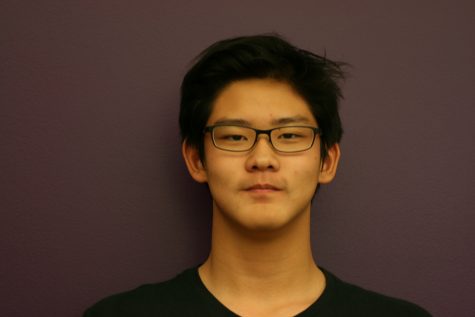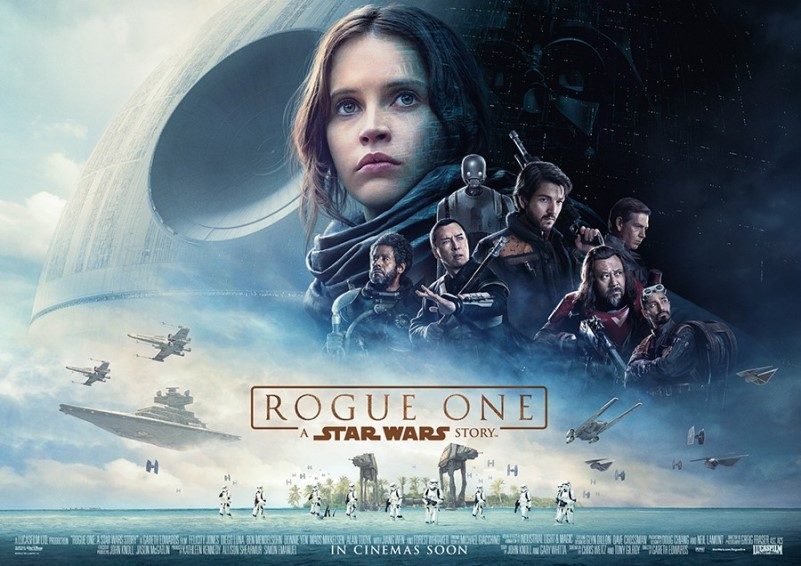Rogue One Review – I’ve Got Stardust In My Eyes
For decades, the crucial story of the Death Star blueprints, the catalyst that set off the original “Star Wars” saga the world fell in love with, went untold. Now, that tale is immortalized in “Rogue One: A Star Wars Story.” Soon, fans will be able to enjoy the epic at home with the DVD and Blu-ray release on April 4.
“Rogue One” stars Felicity Jones as Jyn Erso along with an unlikely squad of rebels, including Captain Cassian Andor (Diego Luna), his droid companion K-2SO (Alan Tudyk), force-monk Chirrut Imwe (Donnie Yen) and freelance assassin Baze Malbus (Jiang Wen). Thrust together by perilous chance, the group fights against megalomaniac Imperial Director Orson Krennic (Ben Mendelsohn) and his army of stormtroopers in order the steal the Death Star blueprints.
Overall, Rogue One’s basic plotline is nothing new. The formula of an unlikely group of heros facing impossible odds against a titanic evil has been the core foundation for countless action movies. Instead, Rogue One is special because it is the first film to truly represent the “Wars” in Star Wars. In the Original and Prequel trilogies, the war between the Galactic Civil War and the Clone Wars only serve as background for the main characters to struggle and develop.
In Rogue One, however, the characters are one with the war, and the war is with them. The audience is immersed in the true aspects of bloody, gritty war that were lacking in past films, including “The Force Awakens.” The story is not about Jedis or their Sith counterparts, or even about the force itself. It is about the galactic struggle for freedom from oppression and tyranny.
As different as it may seem, Rogue One is undoubtedly connected to both the Original and Prequel trilogies. Moviegoers see the return of Bail Organa (Jimmy Smits) from the prequels. It is heartwarming to see the prequels still recognized and remembered. Regardless of the discontent they brewed, the prequels represent a significant portion of the “Star Wars” saga that drew in younger audiences to the galaxy far, far away.
Much to “Star Wars” fans’ delight, Rogue One also sees the return of Darth Vader, once again voiced by the legendary James Earl Jones and physically represented by Spencer Wilding. The nostalgia of seeing Vader in action for the first time in 11 years certainly seemed to contribute to the film’s success.
Rogue One did receive some criticism over modern-day issues. The film sees the recreation of certain characters through the use of CGI, sparking debate about the morality of reconstructing human performances with computers.
There were also many arguments on social media about another female lead (after Rey in “The Force Awakens” and possible political connections. One advertising tweet for the film asked, “Are you with her?” referencing Jyn Erso, but also seemingly one of Hillary Clinton’s campaign phrases “I’m with Her.”
Personally, it was tiring to see Star Wars become tarnished with discussions filled with politics, sexism, racism and LGBT matters. If Disney wishes to include gay heroes (Poe Dameron and Finn were speculated to be gay in the Force Awakens as were Chirrut Imwe and Baze Malbus) as acceptance of LGBT in films or break gender stereotypes with female leads, do so clearly and directly. It is not healthy for fans, the Star Wars saga itself or the activist community to become tangled in politics and social justice in the wake of a beautifully-crafted film. Regardless of political stance or sexual orientation, all people can enjoy an action-packed return to Star Wars.
With the film surpassing $1 billion at the box office, it is a remarkable box office success. Even amid political turmoil and claims of propaganda, Rogue One and its flawless acting, beautiful cinematography and perhaps the greatest action sequences of 2016 offered millions worldwide a nostalgic yet new and adventurous return to a galaxy far, far away.
Your donation will support the student journalists of Portola High School. Your contribution will allow us to purchase equipment and cover our annual website hosting costs.

David Jang is Portola’s Visual Director. He lived his childhood in South Korea until moving to the United States six years ago. David’s favorite subject...




